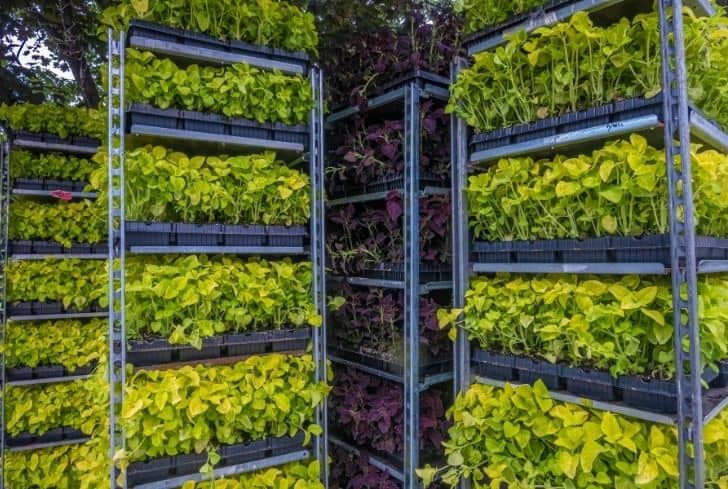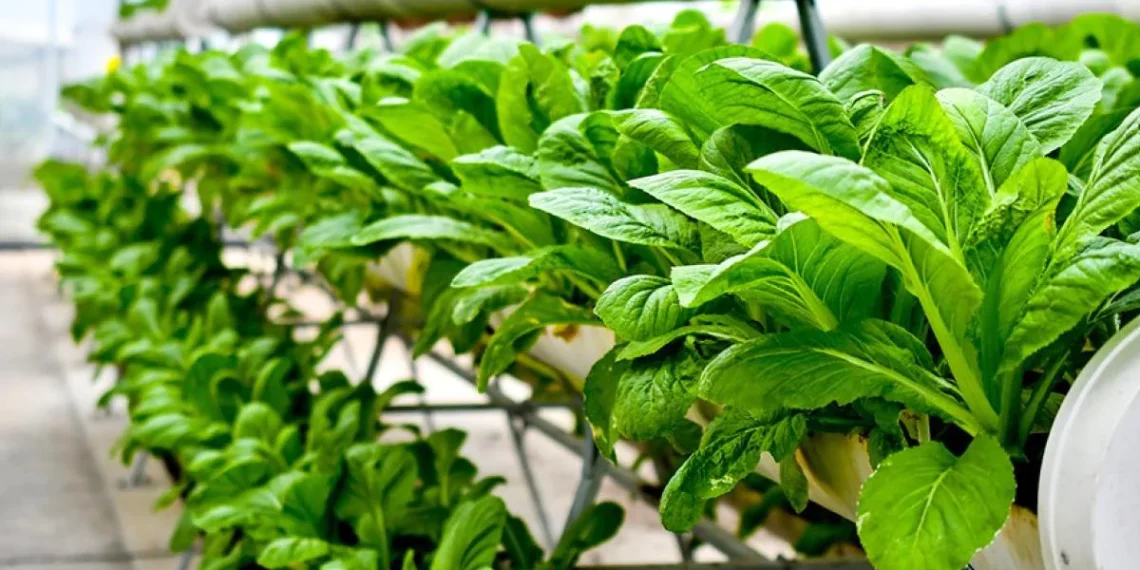Vertical farming is a concept that has been around since the 1930s, but it’s only in the past decade that we’ve seen its massive rise. It seems as if every day there’s a new article released about how vertical farms will change our world. There are currently over 100 vertical farms across the globe, and their growth is only accelerating.
What is a Vertical Farm?

Simply put, a vertical farm is an agricultural system that grows food indoors using hydroponics. A vertical farm is a high-tech system of indoor farms that grow crops using hydroponics, instead of soil. The best part is that vertical farming gives us an opportunity to grow fresh, healthy food anywhere in the world. It’s being used to grow micro-fruits, micro-vegetables, micro-dairy products, and more.
Vertical farms use LED lighting, automation, and computer-controlled irrigation systems to keep plants healthy, producing a consistent yield, every single day. The system keeps plants at a consistent temperature, so they can be grown year-round, and they’re kept humid so they don’t need pesticides or fertilizers.
Why Are Vertical Farms So Important?
Vertical farms are the key to feeding a growing population. With over 7 billion people expected to be alive by the year 2050, we will need to produce an additional two to three times the amount of food that we do now to feed everyone.
The majority of the increase in food demand will occur in developing countries. This is because the consumption patterns of these countries are changing rapidly. As countries like India and China continue to urbanize at a rapid pace, more people will be consuming more food.
Additionally, in many parts of the world farmers are unable to produce enough food to feed the population, especially in developing countries. This means that we will need to produce more food in order to meet the demand. Vertical farms are great because they can grow crops in urban settings where land is at a premium, and where space is at a premium.
Additionally, in many cases, vertical farms operate in areas where it is hard to obtain the necessary power to operate traditional farms. Vertical farms are great because they produce a lot of food with very little space.
Benefits of a Vertical Farm
- Produces healthy, pesticide-free food – When you grow your own food, you’re not exposed to dangerous pesticides or fertilizers. Vertical farming can produce healthy food without any of those harmful substances.
- Scale is key – Most traditional farms are large-scale, meaning that they only produce enough food for a few people. With vertical farming, however, producers can produce tons of different products, which means that they can scale up or down as needed.
- Clean, sustainable energy is used – Since vertical farms use LED lights, you don’t need fossil-fuel-fired power plants to create electricity. In fact, LED lights are so efficient that vertical farms can produce with less energy than traditional farms.
- Easy to transport – With their compact design, vertical farms can be easily shipped across the world. The compact nature of these farms makes them a popular choice for remote areas, where traditional farms may not be an option.
- Environmentally friendly – Vertical farming uses very little water, so the system is friendly to the environment. In some systems, water is recycled constantly, meaning that there is virtually no water waste.
- Produces at lower cost – Vertical farms are extremely cost-efficient, which means that they are a great choice for developing countries where food is scarce.
Drawbacks of a Vertical Farm

- Expensive up-front investment – Vertical farms are extremely expensive to build. This investment is required for the initial construction and equipment, as well as for maintenance.
- Limited space – Vertical farms require a lot of space, which may be hard to come by in some areas. Additionally, it may be difficult to find space in an urban setting.
- Limited access to energy – Vertical farms use a lot of energy, and the systems are more efficient than traditional farms, so they may not be an option where traditional farming is an option.
- Up-front investment required – These farms are extremely expensive to build, and they require a lot of maintenance.
Final Words
Vertical farming is one of the most important agricultural innovations of our time. It can grow tons of food in extremely small spaces, using very little water. The only problem is that vertical farming is extremely expensive to build and requires a lot of maintenance. Fortunately, there are startups trying to solve this problem.
One startup is called AeroFarms, and they use very little water and very little space to grow gourmet crops. Aerofarms engineers have designed an indoor vertical farm that uses less than two percent of the water that traditional farms use, and that is only one-third the size of a typical indoor farm.
This means that it can be used in a lot of urban settings where traditional farms may not be an option. Vertical farms are a great solution for feeding a growing planet, but traditional farming is still the best.




